
For more information check out the festival website or sign up to attend on their Meetup page.
 Join Kydak this Saturday, September 19 at the Phoenix Mobile Festival - the biggest mobile conference in Phoenix! The conference will be held at the Infusionsoft offices in Chandler and is free to attend. The Phoenix Mobile Festival features a full day of top-notch speakers, including our very own Wayne Neale. For more information check out the festival website or sign up to attend on their Meetup page. 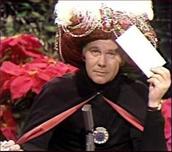
Jumping back in time to 1999, CIO WebBusiness magazine wrote a feature article on the emergence of the Internet at Kodak...led by a much younger Wayne Neale! One of Wayne's observations included:
"Neale imagined a day when families across America would use the Internet to share their lives with written and voice messages and, most importantly, with pictures. With the right browser, he thought, friends could swap photos the way they swap jokes over the telephone." How's that for a glimpse into the uncharted future of what the Internet would become? Posted by Wayne Neale 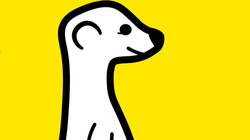 I have used the web since 1993…yes before Mosaic (the first graphical internet browser) was developed at NCSA. I was working on a multimedia project as part of my dissertation at Virginia Tech and someone told me about http and I logged on to check it out. This is not interesting I thought, it won’t support the user experience I was developing as part of my project. Later I discovered Mosaic and had one of those holy Sh*^ moments. Some of you may remember when you didn’t have to log onto the Internet with dial up. You were “always connected” and it was fast. This also moved my computer from the office to my living room. Another moment, I thought, where the world was about to change. There have been a few others…social and mobile phones for example. I think live streaming video is another one of these moments! There is nothing too technologically advanced about live streaming video. In fact, there have been several other live streaming apps going back 4 or more years such as Qik. So what has changed? It’s the experience! The interface to these new apps are easy to use, yes, the app is easy to download/install and its easy to logon… just use your twitter account. Its the complete user experience, and those things I just mentioned are part of it, of instantly sharing video spontaneously, or planned, with a global audience whether its a mom in her New Zealand home talking about her children, a rap group in New York city getting feedback on a new song that they were just working on, or a young gent in Belgium with the title, “ask me to do anything.” The experience is captivating, engaging, sharing, interactive, personal, global, communicative, funny and interesting all in one. And that’s just on the voyeuristic side of things! So far I have broadcasted Kydak’s quote wall about design inspiration, several conversations with people, an acoustic performance of Led Zeppelin's Rain Song and part of a comedy show I attended. This experience is also captivating. It can be serious like about work, totally casual in my kitchen showing people how to make a workout recovery smoothie or for fun like the comedian that was cracking us up. You get to watch how many people start joining the broadcast, they start commenting or asking you questions and what’s fascinating is you can ask them questions and they start responding immediately through comments. And who doesn’t like hearts? This is fundamental! It’s about the human desire for connection, for sharing and for communication. So this recent phenomenon will change how news is reported and will change the social fabric of the planet. It takes advantage of mobile technology, the social graph and soon Facebook and Google will have one! This will only get more powerful and more persuasive as it spreads. The experience is everything that the product affords but also everything humans bring to the experience and the context. But why does everyone want to know what’s in your fridge? Photo credits: Meerkat and Periscope
If you ever wondered what UX and Rock 'N' Roll had in common (and who hasn't), you need to check out this Classic Rock intro to a very unique and thought-provoking presentation from our very own Wayne Neale! 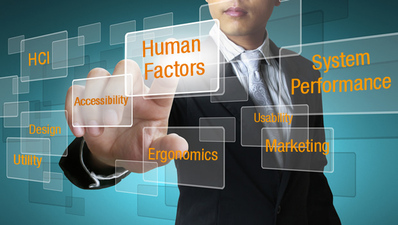 Posted by: Wayne Neale Originally posted on UX Magazine Searching on LinkedIn for titles such as VP User Experience Design or VP Global Design turns up very few people with those titles and roles. There are plenty of Head of ____ and Director of ____ roles, but few vice presidents. One reason might be the confusion over what a user experience is and where user experience starts and customer/brand experience ends. Another reason might be in understanding what UX people do and the value it provides in terms of a return on investment. It’s astounding how much debate and disagreement there is over what user experience means, the disciplines involved, and the approaches people take who call themselves UX designers. The irony is that even for people who create clarity out of chaos and complexity, the term user experience is confusing and fails to serve the field or the people that work in it. In the mid-nineties I defined customer/user experience as the complete chain of interactions that an end user has with the brand/company both physical and emotional. These days, people who contribute to creating and designing user experiences typically work in the areas of: user research, usability testing, interaction design, information architecture, writing, graphic and industrial design, or engineering. So one of the first issues might be defining the "boundaries" of UX and how to organize it inside a company. Where does the role of brand marketer and product manager begin and end and how do they overlap with UX? Should UX be its own department or fit in under marketing or product management? If I were the CEO of a company I would want a Vice President of UX to report to me and, while collaborating with other organizations, be accountable for the end-to-end customer experience, demonstrating the incremental contribution to revenue and profits. Here I think a VP of UX could collaborate with a VP of Marketing to not only set a strategy and vision for the customer/user but to use the skills and approaches of UX to help execute the plan beyond just the product experience and into other customer touch points. The VP of UX would focus on the whole customer experience and ensure great experiences through design and design thinking across all customer touch points and organizational silos that deliver those touch points. Another reason that VP of UX is not a common position in organizations might be that designers typically don’t speak the language of business. To me this is one of the primary roles of a VP of UX. She should connect the business to the product to the user experience. She should create spreadsheets with key performance indicators (KPIs), measure them, and report on the progress. UX has to deliver results and demonstrate those results to get and maintain a seat at the table! And while at the table the VP of UX should deliver the results in business terms of the value of executing great user experiences. Certainly many designers focus on the goals of the business, but I think the point here is that we need to estimate, forecast, measure, and communicate in business terms to business people. Great user experiences don’t happen by accident or with a single UX person on a team. They require hard work from a multi-disciplinary team working across functional groups with a process and set of tools in the appropriate organizational structure. Designers need leaders who can frame what they do inside companies and organize their groups to deliver great user experiences. User experience design is so fundamental and critical to business success that most companies should have a VP of UX. So why should you hire a VP of User Experience Design? Because she can:
Photo Credit: A Refreshing Take on User Experience Design 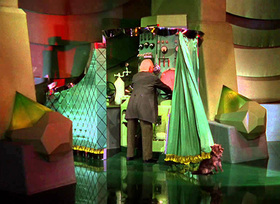 The Wizard of Oz ©Turner Entertainment The Wizard of Oz ©Turner Entertainment Posted by: Kory Kredit In your career, do you ever feel like you are being asked to be someone you’re not? Do you feel like you are trying to portray the image of the Great and Powerful Oz, a Design/UX/Marketing Unicorn that can do it all, when in reality you feel like you’re pulling it off with smoke and mirrors behind a curtain of distraction (subtle shout out to the student section at ASU home basketball games). I began my career as a graphic/web designer back in the mid-90’s. The work I was doing at a small agency was cutting-edge at the time ranging from 3D animation and photo manipulation to doing design for this thing called the Internet that nobody really understood (well, maybe my friend Jay Baer did). Fast forward five years or so and I needed a new creative challenge. I had a desire to be more involved in client strategy and marketing so I shifted gears and forged ahead on a new yellow brick road of my own. Along the way I found myself frequently doubting if I had what it took to be really good at something, or even mildly successful. Was I a designer, a marketer, a writer, a researcher? I had worn so many hats I wasn’t sure which one was the right fit and just when I thought I had it figured out there were always new hats to try on (social media, analytics, UX). Do you ever find yourself asking similar questions? (If you haven’t, can stop reading now and find solace in that fact that you know exactly what you want to do for the rest of your life…and know that everyone else thinks you’re lying…and we hate you.) Looking back over the past 20 years have given me an opportunity to find perspective and offer some tips to finding and following the right career path: 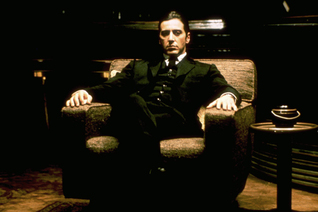 http://godfather.wikia.com/wiki/Michael_ 1 http://godfather.wikia.com/wiki/Michael_ 1 1. Have the courage to take chances The most fun and rewarding jobs I’ve had have always come on the other side of risk. You grow more personally and professionally when you are forced to take chances and try something new. That doesn’t mean you have to start a new job, necessarily. On more than one occasion I’ve stayed at a company and reinvented my job description that ended up being a benefit to my career and my employer. On the other hand, carving out a new path might lead you to a new job…that you might not be sure you can do. Take Richard Branson’s advice on this one, “If somebody offers you an amazing opportunity but you are not sure you can do it, say yes – then learn how to do it later!” 2. Feed your brain When I left college I was prepared for, well, something very different than what I’m doing now. Never stop learning because this industry never stops evolving. When I was 20, I thought I’d be a graphic designer or I’d be working in the film industry making CG movies. In my 30’s I was on my way to becoming a marketing and social media expert. In my 40’s I combined all of my work experiences into something called an Experience Designer, which I didn’t even know was a thing when I was in college. 3. Have a heart Unless you’re Michael Corleone, the ‘It’s not personal, It’s business’ approach just doesn’t work – actually, it didn’t really work too well for him either. Whether you are dealing with clients or co-workers, treating them with respect and even kindness is critical. Nobody likes working with a jerk or a bully so don’t be one. The short-term results aren’t worth the long-term collateral damage. 4. Make friends along the way Jobs will come and go but the friendships that you make along the way can benefit you for years to come. Those friends can provide you the opportunity to share career advice down the road, networking opportunities, people to laugh with when looking back at all the stupid mistakes you made earlier in your career and people to celebrate your professional successes with. I’ve had the fortune of maintaining some of those friendships for over 20 years now and in some cases those connections have led me to new career opportunities – my current job being one of them. Maybe you’ve already learned all of these things on your own, but in case you haven’t hopefully some of this was useful. I know that it would have been useful to me when I was 20-something and thought that I had my career figured out. What are some of the pearls of wisdom that you’ve learned over your career (they don’t have to fit into the Wizard of Oz theme)? 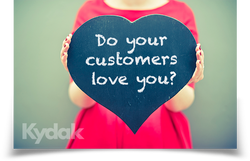 Posted by: Kory Kredit I don’t love tires. They are black, round and they make my car easier to drive when they are fully inflated and have good tread. Despite the fact that my dad sold tires for a living for about 10 years, that is the extent of my knowledge of tires, other than the fact that I know it will cost $500-$600 to replace them on my car. That’s $500-$600 that I would much rather spend on a vacation, a new flat screen TV, a one-month supply of Starbucks…pretty much anything other than buying tires. Even though I don’t have any love for tires I’ve grown to love, or at least appreciate, the tire buying experience at a local tire retailer, Discount Tires. From the greeting I receive when I walk in the door to offering me a free bottle of water and offering excellent service after the sale, every interaction is professional, friendly and makes me feel less depressed about having to spend a large sum of money on something that doesn’t bring me any real satisfaction or pleasure. So, how would you answer the question: Do your customers love you? The product or service you offer is only one element of the customer experience equation. It doesn’t matter if your are selling diamond rings on your website or fishing diamonds out of a drain pipe for Roto-Rooter, every touch point that you have with your customer influences their perception of your brand. The real question you need to be asking yourself is: Do I really understand the experience that my customers have when they interact with my brand across every touch point? If the answer is “no”, it’s time to get out of your office and walk in the shoes of your customers so you can begin to design better experiences for them. We're excited to launch the official Kydak blog. Subscribe to our blog feed and check back often to read our insights into UX, design and any other random thoughts we might want to share.
|
Archives
April 2021
Categories
All
|
